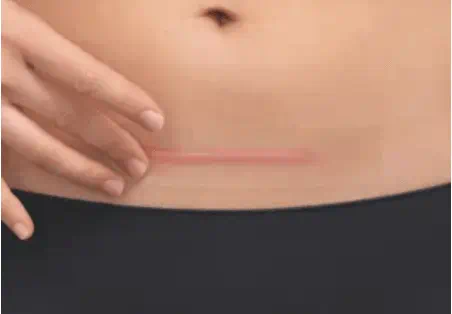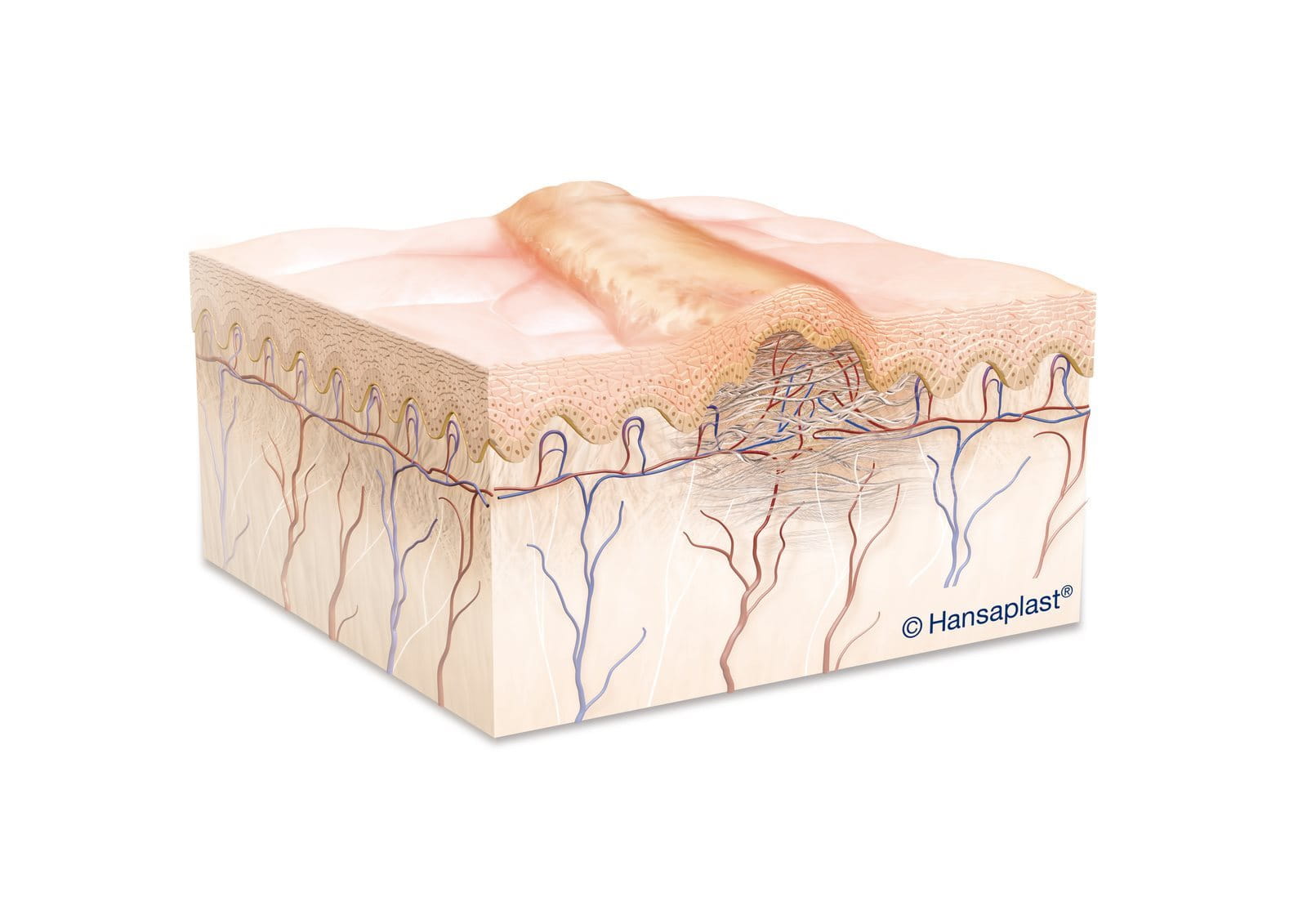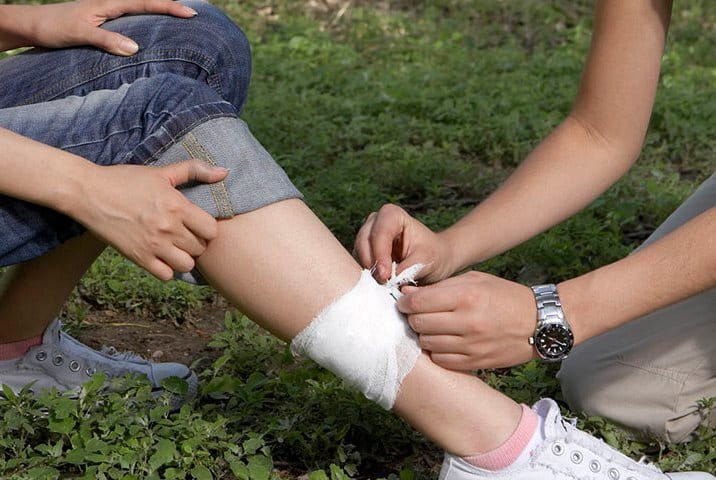A C-section, short for Caesarean section, is a surgical procedure used to deliver a baby through an incision made in the mother's abdomen and is typically performed when unassisted childbirth is not possible for the mother or baby.
Scarring is a natural part of the healing process after a C-section has taken place as the broken skin and tissue attempts to heal itself. While these scars can represent the beauty of motherhood, they can also cause some people to feel self-conscious about their bodies. Learn how to care for C-section scars and how to reduce their appearance.
What does a C-section incision scar look like?

There are different types of incisions made when performing a C-section which can result in different-looking scars. Typically, a horizontal cut about 10 to 20 centimetres long is made above the pubic hairline however, in some cases a vertical incision may be made. To close the C-section incision, doctors may use glue, sutures or staples.
Types of C-section incision scars


How your C-section incision scar heals depends on different factors such as skin tone and how previous scars have healed. Most of the time, C-section incision scars heal without complications. They usually look flat and darker than the surrounding skin, especially in those with darker skin tones, however, they sometimes heal differently:
- Keloid C-section scars: Keloid C-section scars occur when scar tissue extends past the original boundaries of the wound, and they usually have lumps.
- Hypertrophic C-section scars: Hypertrophic C-section scars are thick and hard but they do not extend past the original boundaries of the wound.
How to care for C-section scars
After your caesarean section, your doctor will provide you with information and guidance on C-section scar healing. Healing time varies from person to person, but it usually takes around six to eight weeks to recover from your C-section. Nevertheless, it can take at least a year for a scar to settle into how it will look permanently.
C-section scar healing stages
After the initial cut, there will be four C-section scar healing stages:
- Inflammatory stage:
This stage lasts for the first few days after your C-section. During this time, bleeding will stop, and white blood cells will help guard your wound against infection. Your incision may be swollen and darker than the surrounding skin and you may experience scabbing. - Proliferative stage:
Your skin will be trying to rebuild itself during this stage, producing collagen to strengthen the skin around the wound. New blood vessels form, and your C-section scar will get thicker and change colour as it recedes. - Remodelling stage:
This is the final C-section scar healing stage, and it can last up to a year. During this time, your C-section incision scar will flatten and fade in colour.
Learn more about the stages of healing here.
Itchy C-section scar
If you have found that your C-section has left you with an itchy scar, don't worry. This is a normal part of the wound healing process, as the sensitive nerves and tissue that were damaged during surgery begin to rebuild and reconnect. An itchy C-section scar could also be caused by pubic hair growing back if it was shaved before surgery.
There are a few ways reduce an itchy C-section scar:
- Applying cool compression, for example an ice pack, to the scar
- Wearing loose clothing that does not rub against the scar and irritate the area
Do not scratch the wound as this can cause infection. Some mothers have found that massaging or gently pressing something over the scar reduces itching in C-section scars. This can also help diminish the visibility of the scar as massaging the affected area increases blood flow, which increases the rate of cellular growth.
Learn more about healing and itching here.
How to reduce C-section scars
.png?rx=505&ry=125&rw=452&rh=314&hash=1EA3E741F22321F60C3484C0E35BF34F)
While C-section marks are a lasting reminder of the journey of childbirth, they can also impact confidence and body image.
Elastoplast Scar Reducer Patches, available in XL size for caesarean scars, provide a simple and safe solution to help heal new and old C-section marks. They are designed to minimise the appearance of scars, helping them fade and become less noticeable over time. The XL size ensures coverage for larger scars, while Elastoplast’s advanced formula is gentle on the skin and easy to apply, making it suitable for postpartum use.
C-section scar massage
A C-section scar massage can help its healing and appearance.
Additionally, massaging promotes better blood circulation to the scar site which can encourage healing and fading of the scar. Lastly, a C-section scar massage can also help desensitise the scar tissue, reducing any hypersensitivity you may experience.
It is recommended to wait six to eight weeks before you start C-section scar massages.
C-section scars: Frequently asked questions
A C-section is a major surgery that can affect your day-to-day activities and have lasting effects. Read on for frequently asked questions regarding the long- and short-term implications of having a C-section.
Can I drive after a C-section?
It is advised to wait at least six weeks before driving after your C-section.
This is because your range of motion may be limited due to the incision location and muscles that were affected by the surgery, for example, it may be painful to move your legs to use the pedals or the seatbelt running against your abdomen may irritate the wound.
Is it too late to massage my C-section scar?
Even if some time has passed since your C-section, massaging scar tissue can offer benefits such as improving circulation, reducing tightness and softening the scar.
Nevertheless, scar tissue tends to be more responsive within the first few months to a year after surgery, when it is still actively healing.
Why does my C-section scar hurt years later?
Chronic pain in your C-section scar can be caused by several reasons. Scar tissue can become sensitive over time and depending on your C-section scar healing, your muscles may be restricted in a way that causes discomfort.
If in doubt, contact your doctor to explore treatment options.
When to seek medical advice
After the surgery, the C-section scar will feel sore, and it can be normal to see some bleeding for up to six weeks. However, you should speak to your midwife or GP if you experience any of the following symptoms:
- severe pain around the scar
- pus oozing from the wound
- heavy vaginal bleeding or discharge
- pain when urinating
- leaking urine
- permanent numbness around the incision
- chest pain or difficulty breathing
- swelling or redness in your lower leg
- pain in your breasts
These symptoms may indicate infection or a blood clot, requiring urgent treatment.






